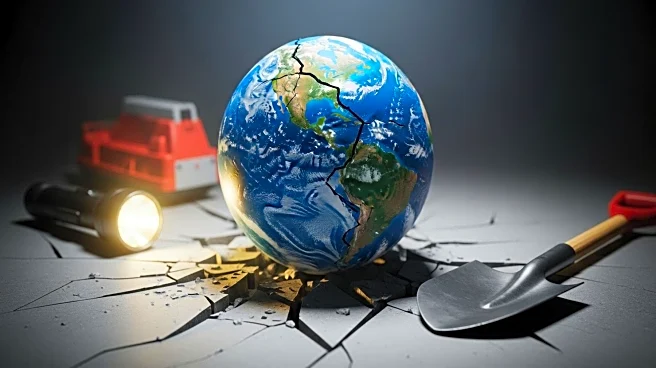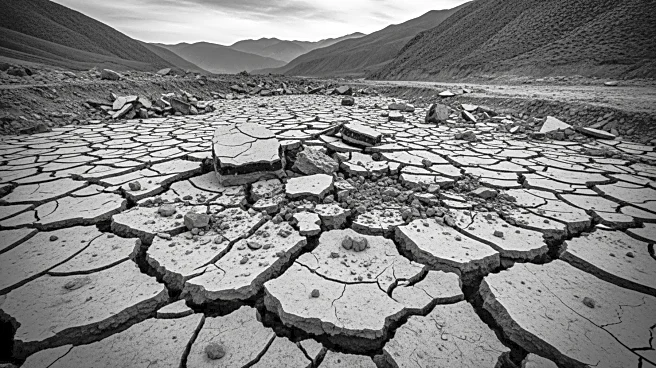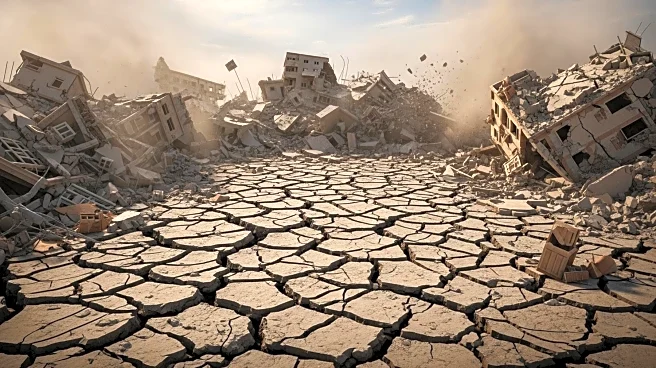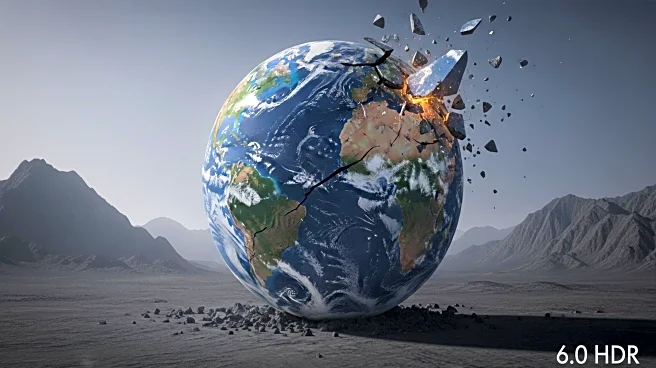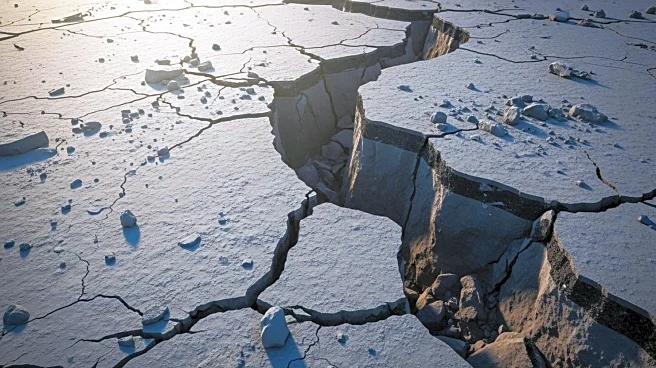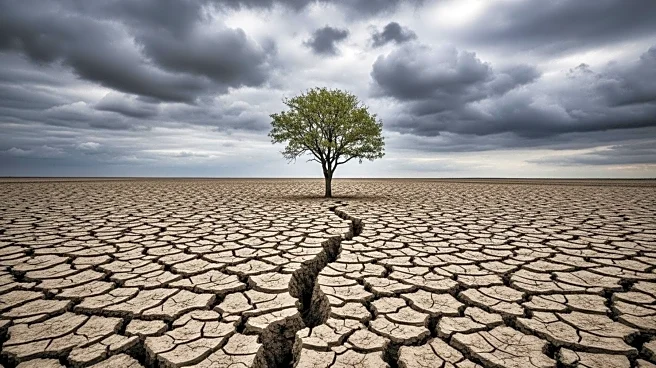What's Happening?
A 6.0-magnitude earthquake struck eastern Afghanistan, causing widespread destruction and loss of life. The epicenter was near Jalalabad, but the most severe damage occurred in Kunar Province. Afghan officials report over 800 deaths and 2,500 injuries, with the death toll expected to rise as rescue workers reach isolated communities. The shallow depth of the quake contributed to its destructiveness, and rescue efforts are hampered by difficult terrain and landslides.
Why It's Important?
The earthquake has devastated communities in eastern Afghanistan, highlighting the region's vulnerability to natural disasters. The impact on local infrastructure and housing is severe, with many homes built from mud and brick unable to withstand the tremors. The disaster poses significant challenges for rescue operations, as access to affected areas is limited. The humanitarian crisis will require substantial resources and coordination to address the immediate needs of survivors and support long-term recovery.
What's Next?
Rescue operations are underway, with teams working to reach trapped individuals and provide medical assistance. The reopening of roads linking Jalalabad to Kunar Province is crucial for facilitating aid delivery. International organizations, such as the Red Cross, are actively involved in the response, and further support from global partners may be necessary. The focus will be on stabilizing the situation, providing shelter and medical care, and planning for reconstruction efforts.
Beyond the Headlines
The earthquake highlights the need for improved disaster preparedness and infrastructure resilience in Afghanistan. The country's mountainous terrain and limited road networks complicate emergency response efforts. Additionally, the disaster may prompt discussions on building standards and the need for more robust construction practices to mitigate future risks.
